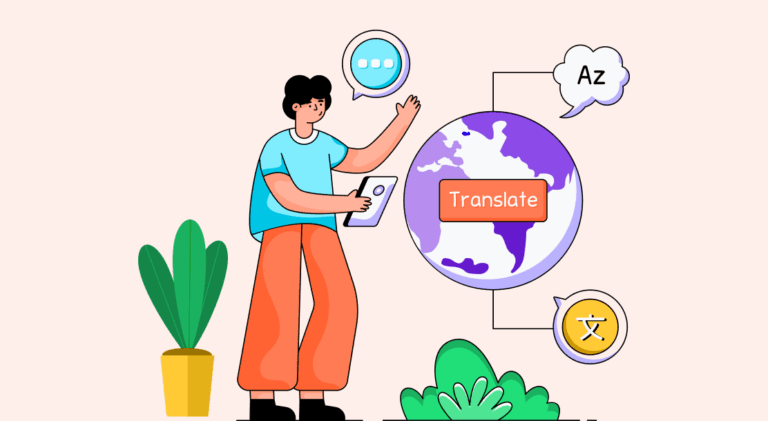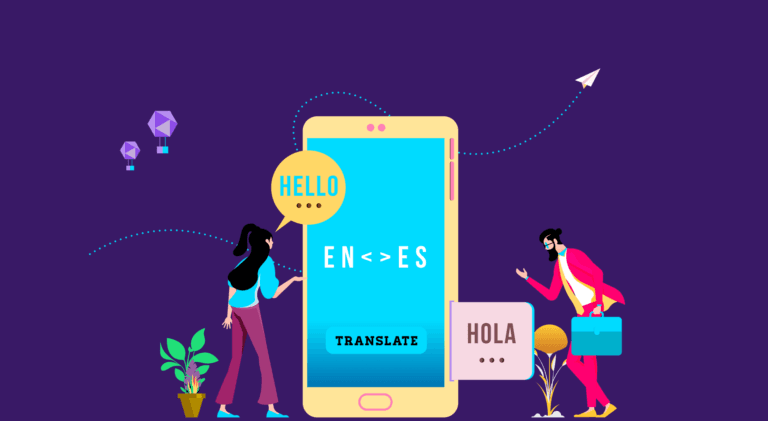
Translation means converting one language into another. In the globalized economy, translation is a crucial factor in sales. The process of translation is usually done by a translator or translation agency. Translators need to be conversant with both the source and target languages.
Any kind of material is translatable. This includes text, audio, and visual material. The need for translation arises because the target audience doesn’t speak the source language. Marketers can easily communicate and sell to customers by converting material into their language.
In this article, we examine the new trends in translation. By the end of this reading, you should understand what areas of translation you should focus on.
Why Translations + Benefits
- Customers like to be spoken to in their local language
- Many customers don’t speak English
- Translation connects the international economy
- Translation enables the easy transmission of ideas globally
- Translation enables the customer base to increase instantly

Why Study Trends In Translation
The study of business trends enables marketers to understand which direction to steer their business in. Studying trends in e-marketing may let marketers know where to focus their efforts. For example, if a marketing study shows that app ads show a high ROI, marketers may decide to spend more time and effort on the same. Check out these app translation and localization tips.
Similarly, studying new trends in translation helps marketers understand which area to concentrate their efforts on. Translation in marketing is about reaching a global audience with a personal touch. Translation trends may reveal certain areas within translation that will lead to a high ROI.
This is the reason you should study trends in translation.
Check out this incredible language and localization podcast.

Translation Services Trends (2022-2023)
Business translation impacts e-commerce vitally. To understand this impact, let’s study the translation services trends for 2022-2023.
The use of machine translation and post-editing will increase.
Machine translation is becoming more important in the translation industry. The reason is — new algorithms are making it more accurate. One of the critical translation industry trends (2023) is the rise in machine translation.
Not only is machine translation quick, but it is also cost-effective. It makes sense to get the material machine translated and then post-edited. This is done by entering the material into a translation tool like Google Translate. The translated material is generally between 60% and 90% accurate. Then comes the post-editing stage. In this stage, a human translator checks automated translation errors and turns the material into a professional translation.
Machine translation combined with post-editing will grow in popularity in 2023 and beyond.

1. Transcreation and translation will take brands global
Personalizing the user experience has been an essential trend in the last 50 years. To achieve this, businesses are increasingly relying on transcreation and translation. Translation and transcreation are about localizing content for audiences worldwide. Transcreation is a combination of the words — translation and creation.
Transcreation is a mix of copywriting and translation. It is used to convey the original intention to a new marketing audience. To adapt copy to new cultures, product names, copy blocks, images, and icons may change completely.
As consumer experiences are matched to their cultural beliefs, the demand for transcreation and translation will rise in 2023 and beyond. Communicating with customers based on their uniqueness will be a crucial success factor.
2. The growth of e-learning
E-learning was on the rise in the pre-covid era. Post-covid, the lack of mobility boosted the concept and took online learning to a new level. E-learning began to cater to primary students, specialized knowledge — like coding, and employee onboarding. E-learning is done at your own time and pace. A key feature of e-learning is that it is centered around the student. This also made e-learning one of the vital translation trends.
The e-learning market is set to increase in the next few years. This means educators will vie to reach local audiences via translation. Video translating and subtitling are set to be an essential part of this. If you examine the current state of online courses, they are primarily in English. This also presents an opportunity for translation services. Video translation and subtitling will grow significantly in 2023 and beyond.
3. Translation and interpretation services are set to rise
Translation and interpretation are one of the most preferred creative & media jobs. The demand for these professionals is set to increase faster than the average employment growth. Medical interpretation has seen a sharp rise in demand post-covid. On-site, phone, and video remote interpreting (VRI) have grown in demand.
The benefits of VRI are:
- It is cost effective
- Allows for on-demand access
- Enables fluid conversations
- Non-verbal and contextual cues incorporated
- Confirms understanding through facial cues
VRI is a significant trend in translation that is set to grow as remote interactions do.
4. Multi-language strategies in SEO
Multilingual SEO means adopting an SEO strategy that involves several languages. This strategy aims to increase search rankings in non-English languages.
Some of the multilingual SEO strategies are:
- Technical SEO: This includes website analysis and targeting based on location and language
- Off-page SEO: This involves translating reviews, multi-language link building, localization of social media efforts, and local SEO.
- On-page SEO: This includes translation, keyword optimization, translation of alt-text and metadata, and localization of content.
When pursuing this translation industry trend, ensure you use a multilingual SEO agency or a professional SEO translator.
5. Collaboration software will rise in popularity
As in other internet-based fields, the translation industry will see a rise in collaboration software. Tools like Trello and Asana have already seen a surge in recent years. Also, video conferencing software has seen an increase in the translation industry. Commercial translators are likely to use these tools within their work area to bolster translation’s professionalism and quality.
6. Customer support will go multilingual
E-commerce is booming. So is e-commerce-based customer support. As multinationals step into new markets, they must consider customers who only speak the local language. Translation technologies like machine learning and AI are set to enable real-time translation. This means customer support will be provided in local languages.
7. Speech translation will boom
Technological advances will see a speech-translation boom in the coming years. Speech-to-speech translation, as well as speech-to-text translation, will increase. AI will benefit the machine translation process, leading to a boom in the industry.
8. Podcasts and videos will be translated
With the growth in bandwidth and the arrival of 5G, it is easier to access podcasts and videos. Multi-language podcasts and videos are set to be one of the biggest customers of translation technologies and agencies.
9. Marketing content translation is set to grow in demand
As it gets easier for businesses to access local markets, marketing translation will rise too. Companies will translate marketing materials into local languages. This is another important trend within the broader field of translation.
10. Real-time translation will grow
You must have viewed a live YouTube video. Some of these are shown with subtitles in real time. However, the translations are sometimes inaccurate, which takes away the message’s power. Advances in technology indicate that accurate real-time translation between languages will become prevalent soon.
11. Translation will be faster and cheaper
By now, you know that translation is the key that unlocks global markets. With the help of automated systems, translation is set to become faster. Because firms require more translations each year, the economies of scale imply that they will become cheaper. Intelligent tools are making translation more accurate.
12. Hard documents will be translated and digitized
The digital world means easy digitization and storage of paper documents. The cloud is a centralized resource that is safe and low-cost.
13. Localized SMS marketing
SMS marketing is an essential branch of modern business. Localization of SMS marketing is a new trend in modern enterprises. To meet the high localization standards that SMS marketing demands, companies will have to employ cutting-edge technologies and expert translators.
14. Blockchain and translation
Blockchain technology is going to alter the translation industry substantially. It may lead to rapid progress in the translation industry. Blockchain will impact accuracy, real-time translation, security, and post-editing transparency.
Key Translation Industry Statistics
To understand the broader field of translation, let’s take a look at some of the statistics here:
- There are about 7139 languages globally. Mandarin Chinese boasts the largest number of native speakers. English is the most spoken language.

- The global machine translation (MT) market is set to be $3 billion by 2027.
- Most full-time professional translators use a computer-assisted translation (CAT) tool.

- 49% of translators are self-employed. 93% of translators have a degree.

Top Language Conversion Software
- Google Translate
- iTranslate
- Microsoft Translator
- Babylon Translator
- Linguee
- Triplingo Translator
- Reverso Translation
- Memsource
Key Takeaways
- Translation and localization are global trends in the internet age.
- Proper translation and localization can give businesses an edge in foreign markets.
- It is essential to take advantage of trends in translation, including machine learning and AI.
- Practically every area of international marketing is touched by translation and localization.
- It pays to outsource to a specialized translation agency.
International business is done by speaking the customer’s language. This is why translation and its related processes — transcreation and localization- flourish. The trends indicate that the translation and localization industry is set to boom with help from machine learning and AI.
If you wish to take advantage of translation to sell your wares, it makes sense to hire a professional agency. It will remove the headache and ensure specialists do your work.
FAQs
Yes. Translation involves the conversion of text from the target to the source language. Localization is about adapting content to a new culture.
According to the Bureau of Labor Statistics, the demand for translators and interpreters will rise by 17% in 2026.
Although it seems complicated given current technologies, one cannot deny this possibility.
The essence of these trends is that the demand for translation is set to shoot up globally. Human translation will be assisted by machine translation even more.
Keep an eye on AI-assisted machine translation in 2023.
Latest Blogs
Explore how Google’s 2025 AI search updates triggered ranking chaos. Learn actionable strategies to adapt your SEO for AI Overviews, zero-click searches, and SERP volatility. Stay ahead now.
Learn how to rank on AI search engines like ChatGPT, Perplexity, and Gemini by optimizing your content for authority, structure, and relevance. Stay ahead in AI-driven search with this strategic guide.
Explore the best healthcare SEO services for your medical practice. Improve online visibility and effectively reach more patients in need of your services.
Get your hands on the latest news!
Similar Posts

Translation
5 mins read
All You Need to Know About Language Translation and Terminology Management

Translation
5 mins read
6 Reasons to Translate Content into German

Translation
5 mins read